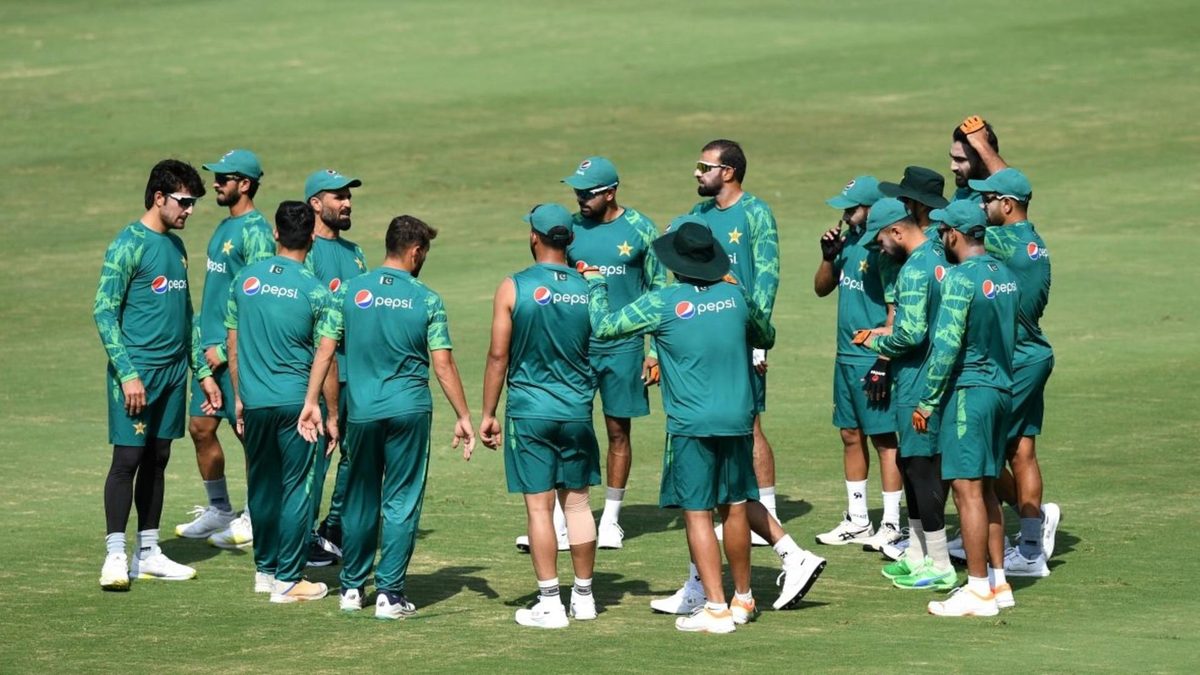
Pakistan, semi-final favourites for several experts, have begun to un-peak at the wrong time, and, largely, they have only themselves to blame.
Skim through the predictions of the pundits, and hosts India, defending champions England, and five-time champions Australia dominate the lists of World Cup 2023 semi-final favourites.
For the fourth spot, some have backed South Africa, the country with the best win-loss ratio in ODI history; some, New Zealand, defeated finalists in 2015 and 2019; and, as always, there has been Pakistan.
Things were going smooth for Pakistan until last month’s Asia Cup, when things began to fall apart. Rain washed out half their league match against India. In the Super Fours, they beat Bangladesh but were decimated by India; then Sri Lanka edged past them in a thriller of a virtual quarter-final.
Pakistan then went on to lose both World Cup warm-up matches. Include them, and they have lost their last four 50-over matches. That does not make happy reading.
Their dip might be temporary, but any fault that exists is likely to become more prominent over the course of a long tournament.
So what is ailing them?
Naseem doesn’t have backup, and the fault lies with Pakistan
Pakistan’s original pace trio – Shaheen Shah Afridi, Naseem Shah, Haris Rauf – is among the most formidable in the world. However, fast bowlers can break down, and Pakistan never prepared the emergency backups.
In 15 ODIs they played this year until Rauf and Naseem both got injured, their back-up pacers – Ihsanullah, Mohammad Hasnain – got a match apiece. The seam-bowling all-rounders – Mohammad Wasim, Faheem Ashraf – were called upon at times, but they were never going to be frontline bowlers.
Pakistan summoned an uncapped Zaman Khan for the must-win match against Sri Lanka at the Asia Cup. For the World Cup, they recalled Hassan Ali, who had not played serious 50-over cricket in 2023 until the warm-up matches.
Shaheen, Haris, and Hassan are the only frontline fast bowlers of the side. Not the ideal squad.
Does Fakhar play or not?
Pakistan’s top three – Fakhar Zaman, Imam-ul-Haq, Babar Azam – were all in the top four in the ICC rankings not too long ago. Fakhar’s 2023 numbers (644 runs at 46, strike rate of 86, three hundreds) make impressive reading, but there is a pattern to it: he had made 454 in his first five innings that ended in 101, 117, 180 not out. The third hundred, the fourth-highest ODI score for his nation, made him the fourth Pakistani to make three consecutive hundreds.
He could do little wrong until that point, but his 190 subsequent runs have come at a shade over 21 without him reaching 35. Pakistan initially left him out against Sri Lanka, only to recall him after Imam got injured.
Yet again, Pakistan’s reluctance to test their reserve bench prevented them from having a backup opener ready. Barring Fakhar, Imam, and Babar, no Pakistani has batted more than thrice in the top three since the start of 2022, and we are talking 25 ODIs here.
The matter remains unsolved. In the warm-up match against New Zealand, Abdullah Shafique opened and made 14 and Iman got one. Against Australia, neither Fakhar (22) nor Imam (16) got going.
Pakistan will probably open with Fakhar and Imam against the Netherlands and get away with it, but the problem is likely to magnify as the World Cup progresses.
Is Shadab Khan an automatic choice?
Since the start of 2022, Shadab averages 30 with the bat and 35 with the ball. In 2023 alone, the numbers read 19 and 39. As vice-captain, he is perhaps an automatic choice. To be fair, Mohammad Nawaz has fared worse this year (18 and 43).
The rise of Usama Mir might have altered things somewhat. With 2-68, Mir did a reasonable job when New Zealand chased down 346 in 43.4 overs in the warm-ups. When Australia amassed 351-7, Mir (2-31 in five overs) impressed more than Shadab (1-69), but the latter got his full quota.
Shadab is likely to be Pakistan’s first choice. A reasonable batter and the best fielder of the side, he will be able to bowl his full quota in the middle overs.
However, time and again – the league match against India at the Asia Cup being the most recent one – have the Pakistan spinners allowed the pressure to come off, for they have often restricted their famed pace trio to the new ball and the death overs.
In Naseem’s absence, simply bowling the full quota is not going to work.
The peril of having too many all-rounders
Pakistan’s ODI strength has revolved around specialists: three pacers and four top-order batters, including the wicketkeeper. They have filled the rest of the XI with all-rounders.
This seems effective on paper – until a specialist loses form (Fakhar) and another gets injured (Naseem). Then, the lack of depth in each department starts showing.
While Pakistan’s best cricketers are still superstars, neither their third-best bowler nor their fourth-best batter is world-class, at least at this point. That is a matter of concern.
Despite everything, however…
These observations can, of course, all go out of the window, for this is Pakistan that we are talking about.
Pakistan, who won the 1992 World Cup with Wasim Haider and Iqbal Sikander, neither of whom played international cricket outside the tournament, and without Waqar Younis.
Pakistan, who won the 2017 Champions Trophy with three debutants (Fakhar, Faheem, Rumman Raees) and a teenager with three ODIs under his belt (Shadab).
Pakistan can do things no one else can. And if they cannot, there is always Qudrat ka Nizam.
To bet on the World Cup with our Match Centre Partners bet365 head here.








